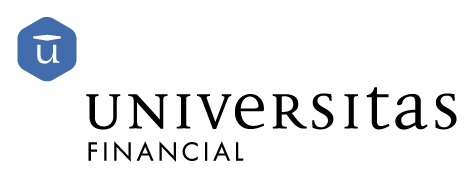You’ve probably heard it before: the RESP is an investment that pays off! Why? Because it’s the only financial product eligible for generous education savings grants from the government. In Quebec, children are even entitled to grant money from both the federal and provincial government bodies! Based on your family income, these grants could top up your RESP contributions by 20% to 60%![1]
The ABC’s of Government Grants
Are you making regular contributions to your RESP? That’s a great start! Each contribution you make attracts grants, which are then paid into your plan. And you don’t have to worry about applying for grants; your RESP promoter does it for you. At Universitas Financial, a team of education savings experts takes care of the application process and ensures beneficiaries receive every penny they are entitled to in grant money. So you can rest easy!
Let’s have a look at some of the strategies you can use to maximize RESP grants:
- Contribute the maximum amount each year
The magic number is $2,500.[2] This is the maximum contribution amount eligible for grants annually. So if your family budget allows it, this is the sum you should invest to attract the maximum grant amount each year. You can choose to make a single payment or, like many parents and grandparents, opt for monthly contributions to make it easier on your family budget.
- Recover unclaimed grants from previous years
New parents often have to juggle with a multitude of extra expenses and lower sources of income due to parental leaves. Once the family budget recovers some stability and a little extra is left at the end of the month, it’s good to consider catching up on unused grants.
Just like with an RRSP or a TFSA, “losing” the rights related to your contributions is out of the question. So if you haven’t invested the maximum amount for certain years, know that you have the possibility of investing a little more in the following years.2
This brings us to our second magic number: $5,000.2 This is the maximum contribution amount that attracts grants if you have unused grant room from previous years.
- Seize every opportunity
You always have the possibility of adding to your RESP. So using a tax refund or an unexpected bonus is always a good strategy to boost your RESP and get closer to the magic $2,500!
Moreover, a increasing number of grandparents, uncles, aunts and relatives choose to offer RESP contributions for a child’s birthday or as a Christmas present. This alternative is truly an investment in the child’s future… and a gift that will grow over time!
- Take advantage of the RESP Loan
Your teen turned 14 years old and you’re starting to anticipate the cost of post-secondary education? You might have thought about increasing your RESP contributions to maximize the government grants received, but when you’re on a tight budget, it’s easier said than done. In this case, you might consider the RESP Loan offered by Universitas; a simple solution with considerable benefits!
By taking a loan with one of Universitas Financial’s industry-leading partners, you’ll have all the assets needed to invest in your RESP. The loan’s interest is the only payment to cover, which is a great deal since the hefty grant sums the loan will attract outstrip the interest by far. It’s a winning strategy! And once you plan reaches maturity, the loan is automatically reimbursed to the lending institution.
The key is to always remember your RESP when you have a little extra money and are wondering which investment or project to prioritize. When it comes to the RESP, even the smallest contribution can go a very long way!
*In provinces where there is a provincial incentive.
[1]The Canada Education Savings Grant (CESG) rate is 20% to 40% and yhe Quebec Education Savings Incentive (QESI) rate is 10% to 20%, based on adjusted family net income. Certain conditions apply; see our prospectus at universitas.ca.
[2] Certain restrictions may apply; see our prospectus at universitas.ca.

